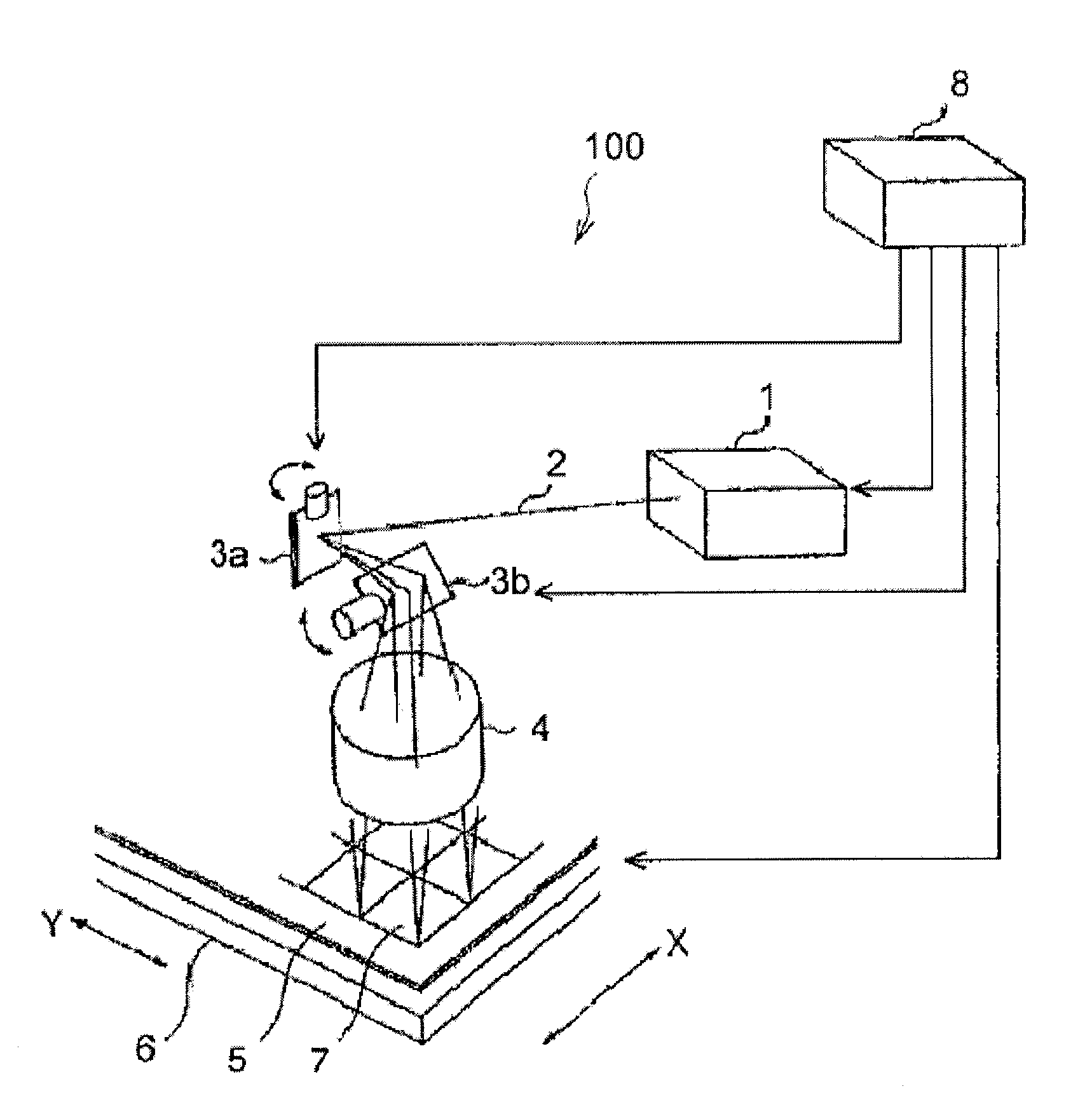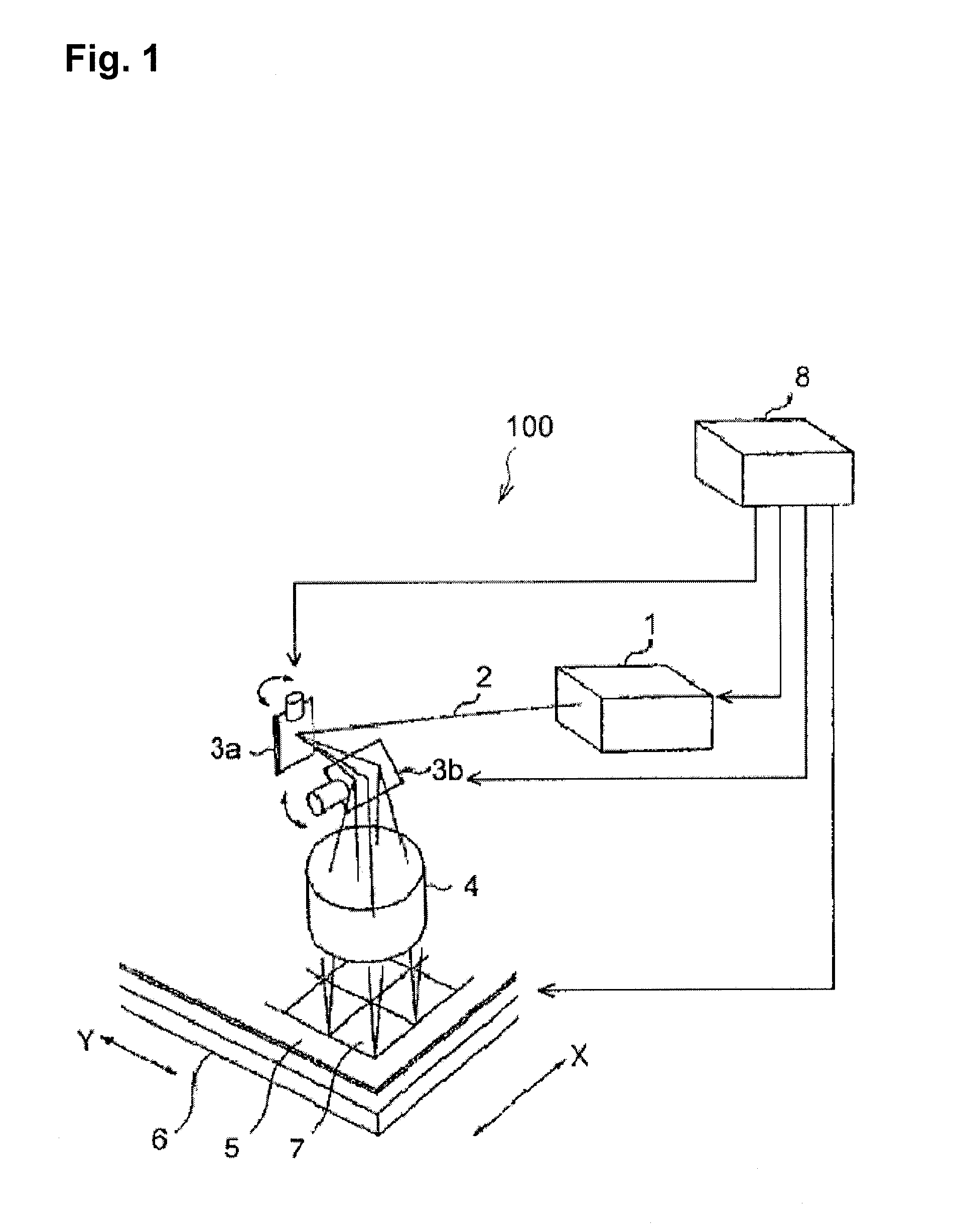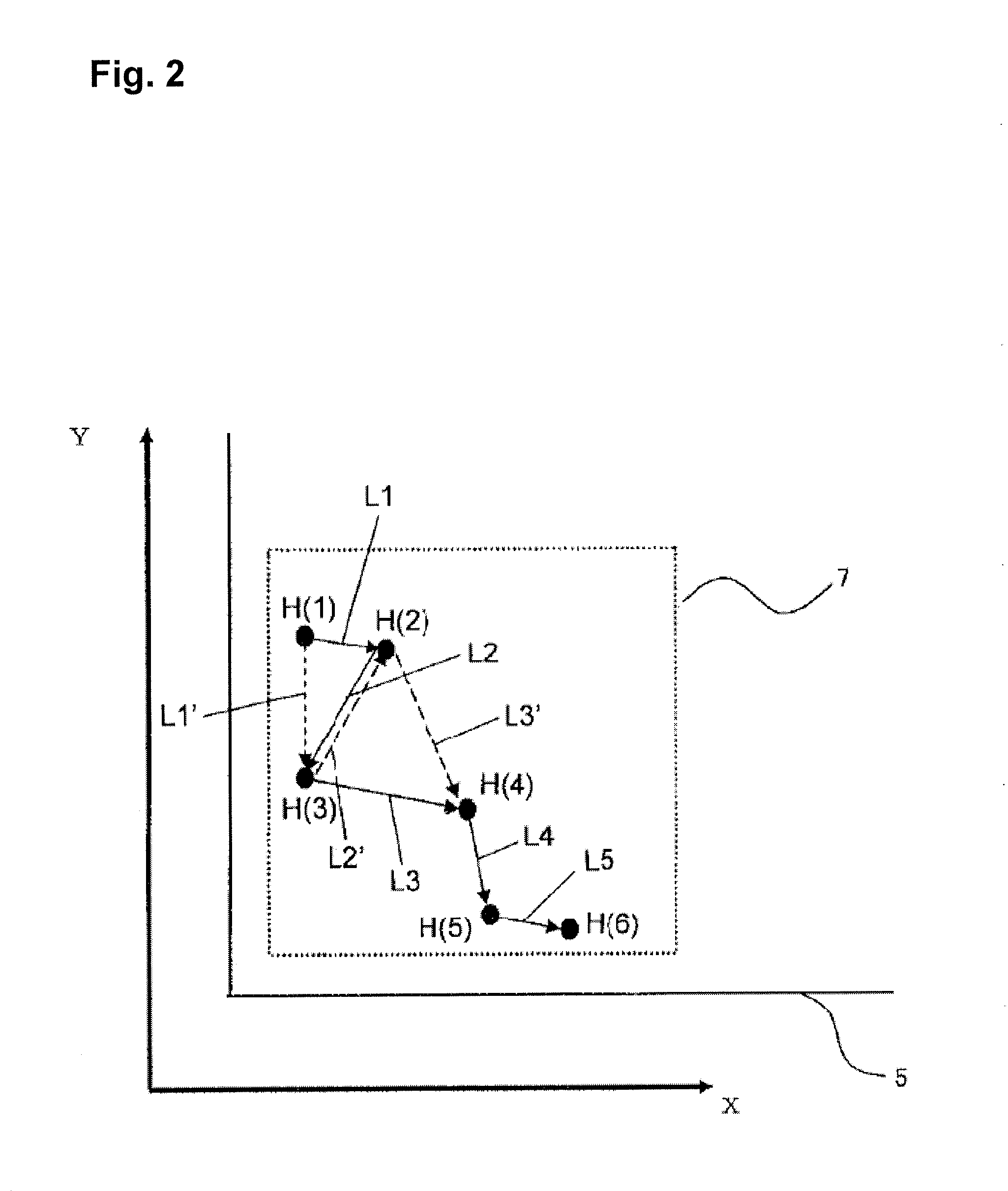Laser machining method, laser machining apparatus, and laser machining program
a laser machining and laser machining technology, applied in the direction of manufacturing tools, data processing applications, welding/soldering/cutting articles, etc., can solve the problems of reducing machining quality, and reducing the accuracy of laser irradiation. the shortest route, the effect of minimizing the variations of the hole diameter
- Summary
- Abstract
- Description
- Claims
- Application Information
AI Technical Summary
Benefits of technology
Problems solved by technology
Method used
Image
Examples
Embodiment Construction
[0024]In the following detailed description, for purpose of explanation, numerous specific details are set forth in order to provide a thorough understanding of the disclosed embodiments. It will be apparent, however, that one or more embodiments may be practiced without these specific details. In other instances, well-known structures and devices are schematically shown in order to simplify the drawing.
[0025]Hereinafter, an embodiment of the present invention will be described with reference to the accompanying drawings.
[0026]FIG. 1 is a schematic diagram illustrating a laser machining apparatus according to the embodiment of the present invention. In this diagram, a laser machining apparatus 100 basically includes a laser beam source 1, first and second galvanometer mirrors 3a and 3b, an fθ lens 4, an XY table 6, and a control device 8.
[0027]In the laser machining apparatus 100 of such configuration, a laser beam is emitted from the laser beam source 1, and scanned onto a printed ...
PUM
 Login to View More
Login to View More Abstract
Description
Claims
Application Information
 Login to View More
Login to View More - R&D
- Intellectual Property
- Life Sciences
- Materials
- Tech Scout
- Unparalleled Data Quality
- Higher Quality Content
- 60% Fewer Hallucinations
Browse by: Latest US Patents, China's latest patents, Technical Efficacy Thesaurus, Application Domain, Technology Topic, Popular Technical Reports.
© 2025 PatSnap. All rights reserved.Legal|Privacy policy|Modern Slavery Act Transparency Statement|Sitemap|About US| Contact US: help@patsnap.com



